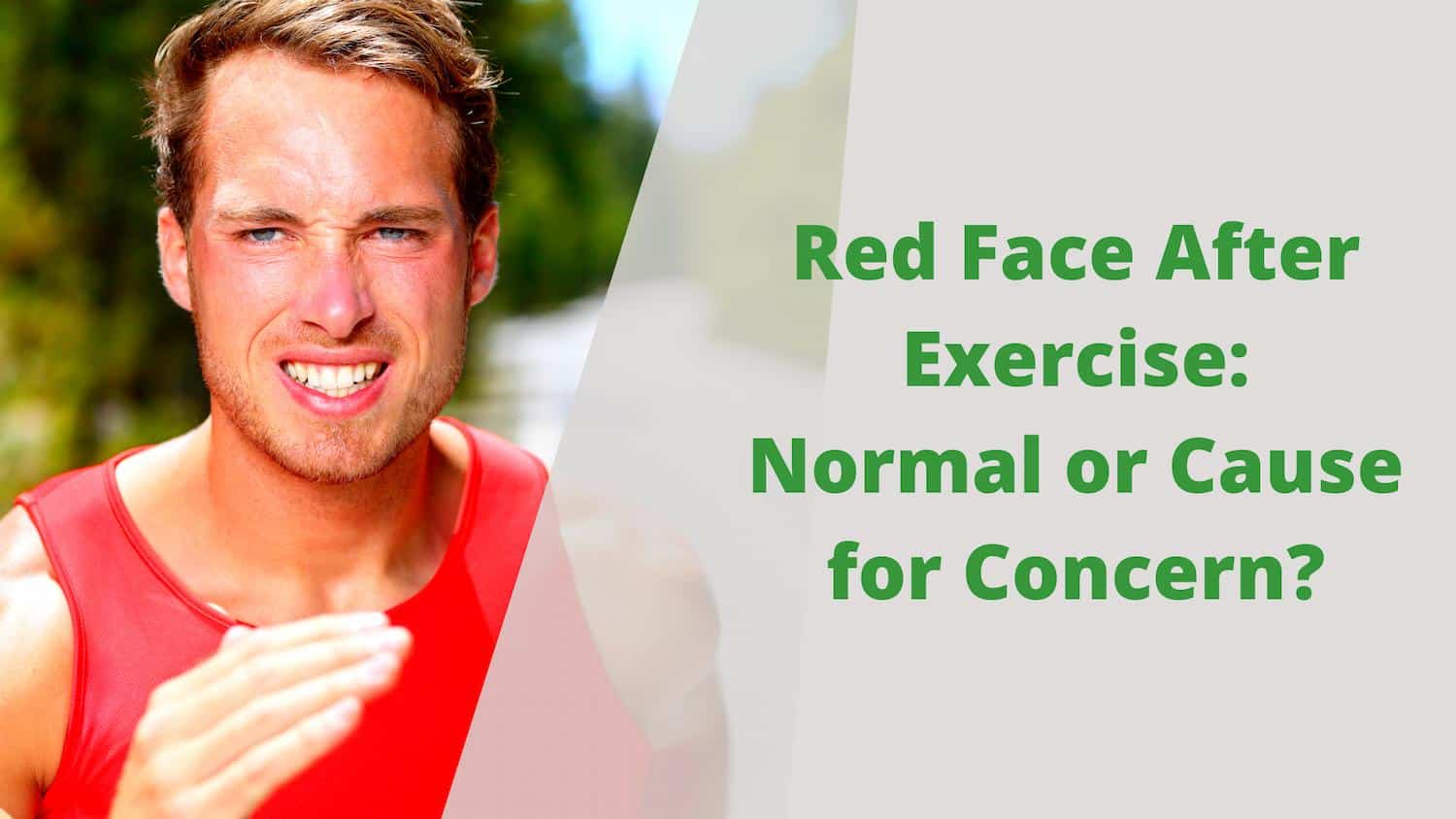After exercise, a red face is a common occurrence among active people, especially women and people with fair skin. When you exercise, your heart rate goes up and your body produces heat paired up with sweat.
Sweat helps you cool down as your body increases blood supply to deliver more oxygen to your muscles and skin; essential to regulate body temperature. This then results in your veins dilating to allow better blood flow through them.
This article delves deep into why your face turns red after exercise, when you should be concerned and how to manage the redness.
Table of Contents
Key Takeaways
- Facial redness is a result of blood vessels dilation to facilitate proper blood flow to the skin.
- A heat rash can make the face turn red, especially when working out in a hot environment.
- The redness of the face is normal after exercise; unless you experience symptoms such as light-headedness, low blood pressure, skin irritation, nausea, and difficulty breathing.
What Causes Facial Redness?
Facial redness is a result of several factors, some not related to fitness. Some of the major causes of facial redness include rosacea, skin allergic reactions, Seborrheic dermatitis, Atopic dermatitis, Psoriasis or a reaction to treatments [1].
Regarding exercises, facial redness results from the widening of blood vessels and a heat rash resulting from working out in hot weather. Here is a detailed discussion of how these two make the face turn red.
Widening of Blood Vessels
During exercises, your body temperature increases, enabling the veins to drive blood to the skin’s surface. This results in sweating which is the body’s mechanism to cool down and regulate body temperature.
The cooldown process can lead to a flushing red face, especially post-workout. The blood vessels dilate to allow more blood to flow to your skin surface, supplying oxygen to your muscles.
Facial redness is expected after exercise and is an early sign of heat exhaustion. The Centre for Disease Prevention expounds more on this, with additional symptoms being nausea, light-headedness and excessive sweating [2].
Heat Rash
Another reason you may experience facial redness is heat rash. When you exercise in a hot environment, your skin is prone to developing heat rash to cool down as you go. This may result in a red face during and after exercise.
If you like running in the summer, try to run early in the morning before the sun is too hot to manage. Also, pay attention to how you feel when exercising outdoors. Look out for symptoms such as light-headedness or nausea.
These could be as a result of a heat-related illness such as dehydration or heat exhaustion. In such a case, stop exercising, drink some water, staying hydrated and get in the shade. Continue to exercise only after your breathing gets back to normal.
How To Manage Redness After Exercise
There are several ways to get rid of flushing after exercising. One of these is spritzing cold water on your face during a workout. Carry a spritz bottle with you to the gym and mist some water as you work out.
This will help the skin cool off better and minimise the redness. Additionally, spritzing water helps to keep your skin with staying hydrated by replenishing moisture lost during sweating.
Another way you can reduce the redness after exercising is by using a cold washcloth and moisturising your skin after you work out. This is similar to spritzing water, but it is more reactive and penetrative.
If you cannot access water immediately after your workout, consider carrying some cleansing wipes. Gently wipe your skin with a water-based cleansing wipe to reduce redness and assist in cooling down.
When You Should Be Worried
A red face after running is usually normal, but you cannot ignore that facial redness could be a sign of other skin issues. You should be worried if you experience symptoms such as wheezing, difficulty in breathing or diarrhea.
Also, if you experience skin irritation, itchiness or extreme redness that does not go down, you might want to see a dermatologist for treatments. Your dermatologist will rule out skin conditions and advise you on managing redness if it is caused by a skin illness.
FAQ?
How Can You Keep Your Face From Turning Red When You Run?
There is not much you can do to keep your skin from turning red during exercise. The extent of redness varies from one individual to another, with factors such as the intensity of the workout, the skin type, duration of training etc.
However, you can reduce redness by spritzing cold water using a cleansing wipe or a washcloth after working out. These assist in the cooling down process, minimising redness to a great extent.
Is It Alarming When Your Face Turns Beet Red During Exercise?
You should not be alarmed when you turn beet red, especially if you have fair skin and just started exercising. However, facial redness can indicate skin conditions such as Rosacea, Psoriasis, etc. It would therefore be best to consult a dermatologist for advice.
The Bottom Line
You do not have to worry about getting red after a workout. As long as you are healthy and have been cleared to exercise, there should not be any cause for alarm. The tips above can help you manage the redness during and after your workout.
References
- https://www.aad.org/public/everyday-care/skin-care-secrets/face/facial-redness
- https://www.cdc.gov/disasters/extremeheat/warning.html






